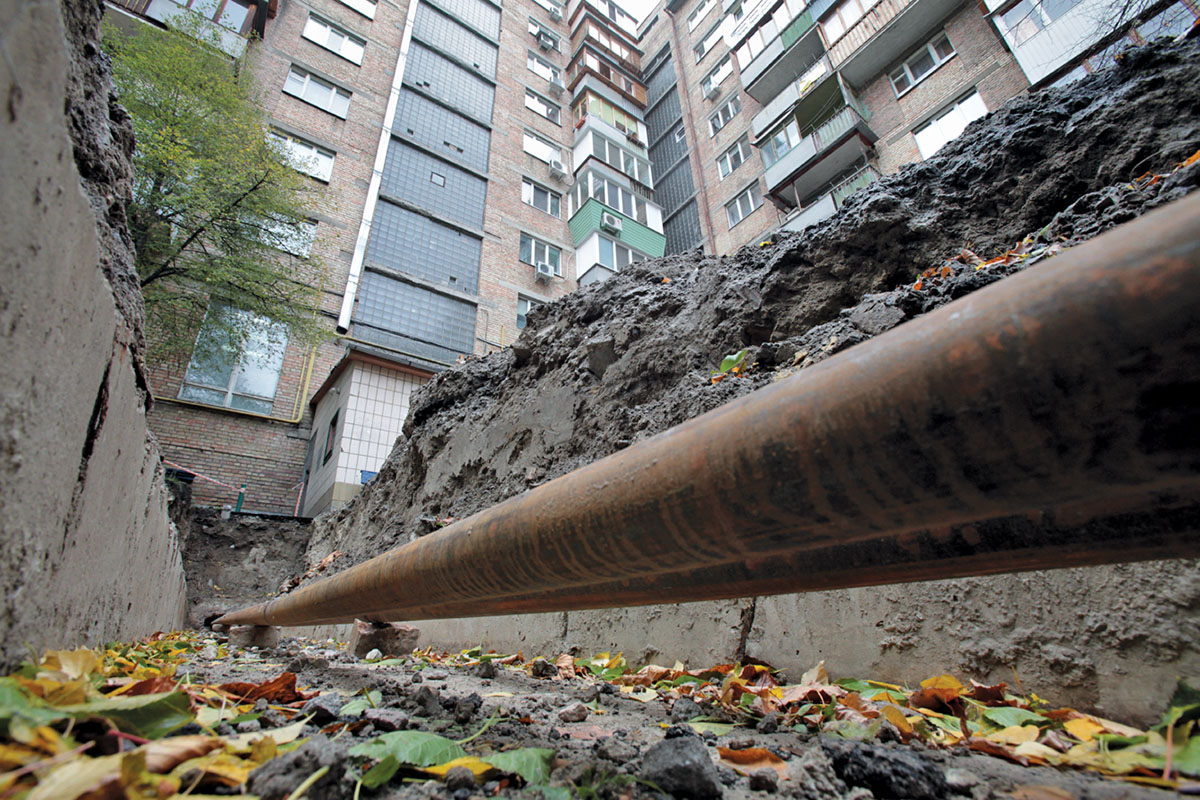It costs a lot to stay warm these days.
The government in April 2016 more than doubled the price of gas, to keep commitments to its international backers and to bring prices to consumers to realistic market levels as a way to end corruption in the gas trade.
The price of gas for households is now Hr 6,122 ($227) per 1,000 cubic meters, with the average household using just over 1,200 cubic meters over the heating season, which lasts from October until April.
However, a lot of the heat supplied via the country’s centralized systems, which pipes hot water through vast networks to radiators in every home and workplace, is wasted due to poor building standards. Vice Prime Minister Hennadiy Zubko estimates that 47 percent of the country’s heating losses are due to building inefficiencies.
When combined with heating systems designed for Soviet-era communal apartments, where the vast majority of individual apartment residents have no way of controlling how much they will spend on heating, Kyiv has begun to see huge demand for individual heating systems in new constructions, and innovative solutions for older buildings.
“It’s been an explosive hit for consumers, and a real factor for improving energy efficiency,” said Oleksiy Orzhel, head of Better Regulation Delivery Office’s energy analytics division.
Priorities
Many losses — especially in buildings that were erected during the Soviet or pre-revolutionary eras — come from poorly made windows, as well as decaying centralized heating systems that hemorrhage heat, either from poor insulation or regular pipe bursts and leakages.
Top Ukrainian officials have publicly stated that energy efficiency is a priority for them.
“We consume five times more heat energy than Germany, three times more than Poland and twice as much than neighboring Belarus,” Zubko said in a speech in February. “We Ukrainians have to plan how to drastically reduce the energy costs of the state and Ukrainian families, and bring them closer to the indicators of the civilized world.”

An employee of DTEK energy company uses a thermographic camera to estimate the heat loss in a residential building in Kyiv on March 18. (UNIAN) (source)
But these statements are only partly accurate.
A $3.65 billion loan package offered by the Chinese government and targeted specifically at revamping the country’s energy infrastructure has yet to be approved, years after it was offered, due to infighting in the government.
According to the 2006 State Building Norms of Ukraine, as approved by the Ministry of Regional Development and Construction, buildings in Kyiv’s climate shouldn’t lose more than 82 kilowatts per hour per cubic meter.
But according to Vladimir Sementsov, CEO of EC Service Development company, only 2 percent of homes in Kyiv meet this norm. “Among older homes, heat losses can reach 200 kilowatts per hour per cubic meter,” he told 100realty, a Kyiv real estate website. “Many developers do not follow legal norms.”
Do it yourself?
Some Ukrainians have taken the situation into their own hands. That does not include modifying the centralized heating system in one’s apartment to create one’s own. Although there are rumors that some Kyivans do find ways to pull that off, the practice is illegal.
“If they don’t want to sign an agreement with us, that’s their right,” said Kyivenergo spokeswoman Tetyana Orlenko. “But one can’t remove oneself from centralized heating.”
The situation has a few exceptions. Some old buildings in Lviv and Odesa were never hooked up to the central heating network, leaving their residents to install their own individual heating networks.
New developments allow this option to an extent, said Aleksandr Skubchenko, head of Ukraine’s residential union.
“It’s possible to create an individual heating point,” Skubchenko said. “But there’s a lot of bureaucracy — you need approval from the whole apartment building to do it legally.”
There is also the option of installing an individual meter, Skubchenko said, which allows residents to regulate the amount of heating they receive.
“There are state programs for this, but they are unfortunately not very widespread,” he said.
New developments
Some developers of new buildings have made installing thicker windows and modern heating systems a priority.
Orzhel said that new buildings are generally better, and many of them offer residents the ability to control their own property’s heating via individual heating points.

Kyivenergo repairs cracked pipes covered in rust near Velyka Vasylkivska Street on Oct. 31. The process has been ongoing for two weeks as the pipes remain uncovered. (Pavlo Podufalov)
“But there’s a certain conflict of interests here,” he added, saying that since the consumer does not control the amount that is delivered — only the amount that is used — he can still be overcharged while energy is still lost.
He added that long-term investment would be needed to rectify the problem. “Energy efficiency requires long-term and cheap money,” he said.
One proposal would be to require households receiving subsidies on energy tariffs to invest the part of the subsidy that exceeds the amount paid during the heating season into energy efficiency improvements like thicker windows or insulated walls.
But Orzhel doubted that the government would act, given the early start to the election season. Ukraine’s presidential and parliamentary elections are scheduled for 2019, but politicians are already jockeying for favor.
“We are hostages to the political situation,” he said.
